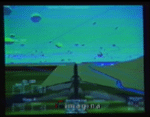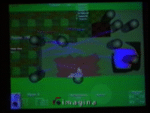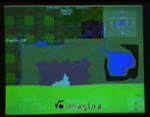Ce document n'est pas traduit, désolé...
The Synthetic BattleBridge and the Virtual Cockpit
Image(s): 640*480
 Jpeg Image (34 Ko)
Jpeg Image (34 Ko)
|
 Jpeg Image (29 Ko)
Jpeg Image (29 Ko)
|
 Jpeg Image (34 Ko)
Jpeg Image (34 Ko)
|
Author(s)
-
Martin Stytz
-
P.Amburn
-
E.G.Block
-
M.Erichsen
-
W.Gerhard
-
B.Soltz
Institute(s)
-
Air Force Institute of Technology - Virtual Environments, 3D Medical Imaging and Computer Graphics Lab -
- Country : USA
Project : Synthetic BattleBridge Virtual Cockpit
Video(s) and extracted images: 320*240
|
Film
1 |
Video QuickTime -> |
|
|---|---|---|
| Jpeg Images -> |
 (12 Ko)
(12 Ko)
|
|
Film
2 |
Video QuickTime -> |
|
|---|---|---|
| Jpeg Images -> |
 (11 Ko)
(11 Ko)
|
|
Film
3 |
Video QuickTime -> |
|
|
|---|---|---|---|
| Jpeg Images -> |
 (11 Ko)
(11 Ko)
|
 (12 Ko)
(12 Ko)
|
|
|
Film
4 |
Video QuickTime -> |
|
|
|---|---|---|---|
| Jpeg Images -> |
 (9 Ko)
(9 Ko)
|
 (11 Ko)
(11 Ko)
|
|
Description
We describe the Synthetic BattleBridge and Virtual Cockpit virtual environment project. These two systems are designed to enable people to comprehend, interact with and observe large-scale virtual environments, such as a battlespace. To enable us to maximize the complexity and number of actors in the virtual environment, we choose to equip these systems with the capability to interact with other virtual environment systems accross long-haul networks, thereby allowing them to participate in a distributed virtual environment.
-
Date : 93
-
Category : Conferences
-
Keys Words :
- v+irtual reality
- virtual environments
- distributed interactive simulation
- aircraft simulator
- virtual cockpit
- aerodynamics
- command and control
- observatory
-
Theme(s) :
More Information...
-
Bibliography :
94 Imagina Proceedings pp 77-90
-
Abstract :
Tools for Visualizing, Navigating, Understanding, and Participating in large-scale, Distributed Ground, Air, and Space Virtual Environments Distributed interactive simulation is enabling the development of large scale synthetic environments that are capable of supporting battlefield scenarios that run in real-time. The synthetic environment description consists of the terrain, stationary objects, and dynamic objects. Terrain descriptions are built from elevation data placed at the intersections, or posts, of a regularly spaced grid. The terrain surface is represented with triangles in a configuration known as triangle mesh. The stationary objects, such as buildings and roads, are also described with polygons and laid upon the terrain in their correct locations. The synthetic environment is populated by dynamic actors that are a combination of intelligent non-cooperative autonomous forces and manned simulators. The actors provide the degree of situational complexity encountered in a true battlefield and are interconnected using distributed simulation technology. This technology builds upon the distributed environment capabilities developed in the ARPA sponsored SIMNET2 distributed virtual environment project. These capabilities work together to an experience that emulates the diversity and uncertainty of the battlefield environment in the ground air and space arenas. However, to provide the experience, tools for observation and for action within the environment are required. Our laboratory has undertaken the task of building a variety of these tools. We are currently working on a virtual environment observatory station, called the Synthetic BattleBridge, and two virtual environment actor stations, called the Satellite Modeler and the Virtual Cockpit. The observatory allows a user to enter a virtual environment to observe the activity within a virtual battlespace, whether it is on the ground, in the air, or in space. The virtual environment actors, on the other hand, are designed to function as a realistically performing aircraft or spacecraft in a distributed simulation, while being inexpensive enough to be able to be used in large numbers. The Synthetic BattleBridge (SBB) is a system designed to support accurate and timely decision making about a battlespace by providing several different types of cognitive support for analyzing the activity in a battlespace. A primary goal for the project is to provide a training platform for commanders that excceeds the capabilities of existing platforms for monitoring and assessing in real-time the activities in a virtual battlespace. This goal requires that the SBB be able to render all actors in the environment, move through the environment, and analyze the activity there and summarize it to help the user maintain situation awareness of the activities in the synthetic environment. This capability can provide the commander with a broad range of experience in battle situations. We believe that this greater range of experience will expand the commander's mental model of the battle process, which he can use in a real battle to make better decisions. The Synthetic BaffleBridge also functions as a simulation and training platform that provides a capability for participants to interact in real-time when performing group and individual tasks involving mission visualization and mission planning. The SBB will also provide a capacity for the commander to replay and analyze the battle scenario and criticize his decisions. In addition to its use as a training platform, the SBB project addresses the development and evaluation of advanced user interfaces, information aggregation techniques, and information presentation techniques. The Satellite Modeler is a virtual environment actor that allows analyst-users to enter a virtual environment that resembles a near-Earth space environment and to visualize satellite models in their correct orbits around the earth. In addition, the position and velocity data for each satellite is inserted into the distributed simulation for use by other actors and observatories. This project was begun in recognition of the fact that as the number of satellites in orbit increases it will become increasingly difficult and important to be able to visualize spatial relationships between satellites and between satellites and the Earth. The Satellite Modeler is designed to provide several types of understanding and analysis assistance to a user. It allows users to place themselves upon a virtual satellite and determine the other satellites that are visible from the user's satellite at any point in its orbit. It also allows a user to access, for a given satellite at any point in its orbit, what positions on the ground are visible. Finally, it provides a capability for visually determining, for a given position on the surface of the Earth, which satellites are visible. These questions are important for mission and reconnaissance planning. The answers to these questions require consideration of satellite model and sensor characteristics, orbital mechanics, solar and lunar position, and ground terrain. Precise knowledge is also required of the satellite's performance characteristics and orientation. The Satellite Modeler provides manipulation functions that allow a user to interact with and control, multiple satellite models and satellite constellations and establish orbital parameters. Currently, the Satellite Modeler can control 24 satellites in their correct near-Earth orbit. The system currently allows the user to view satellites in orbit from both a space-based and Earth-based point of view. The Virtual Cockpit is an inexpensive flight simulator built with a commercial graphics workstation, flight controls, head position tracker, and head-mounted display equipment. The Virtual Cockpit project's goal is to provide an aircraft simulator for a distributed virtual environment that relies upon a minimum of physical devices to create a sense of immersion within a cockpit in an aircraft for the user/pilot. There are three functional components of the virtual cockpit: (1) flight dynamics, (2) communication to maintain the vehicle status of other simulators and to broadcast the status of the virtual cockpit, and (3) display of the out-the-cockpit imagery, HUD, and cockpit dials and gauges. The numerical approximation of flight, the aerodynamics model, is based on some simplifying aerodynamic assumptions and a set of parameters that describe the airframe. The aircraft's speed, position, velocity and acceleration in the simulated world and the current throttle and stick settings are all inputs to the aerodynamics model. The rest of the virtual cockpit software relies on snapshots of the aerodynamic state variables for rendering and network communication. The out-the-cockpit imagery, HUD, dials and gauges are based upon the outputs from the aerodynamics model. The imagery portrays the terrain as well as other actors within the synthetic environment.- Distributed interactive simulation uses heterogeneous hosts, local and wide area network technology, and a common synthetic environment description to insert a wide variety of both human and computer controlled actors into a single, shared synthetic environment.
- The SIMNET project is one of a number (such as WARBREAKER) that use virtual environment technology and distributed simulation to create a virtual battlespace.
- Called observatories.
- Called actors or players.
- The Satellite Modeler achieves realistic physical modeling of satellite orbital motion by basing its orbital calculations upon orbital mechanics first principles and orbital elements descriptions.
-
Some external links :
-
Some internal links :
-
 Same Author
Same Author
-
 Solar System Modeler
Solar System Modeler
-